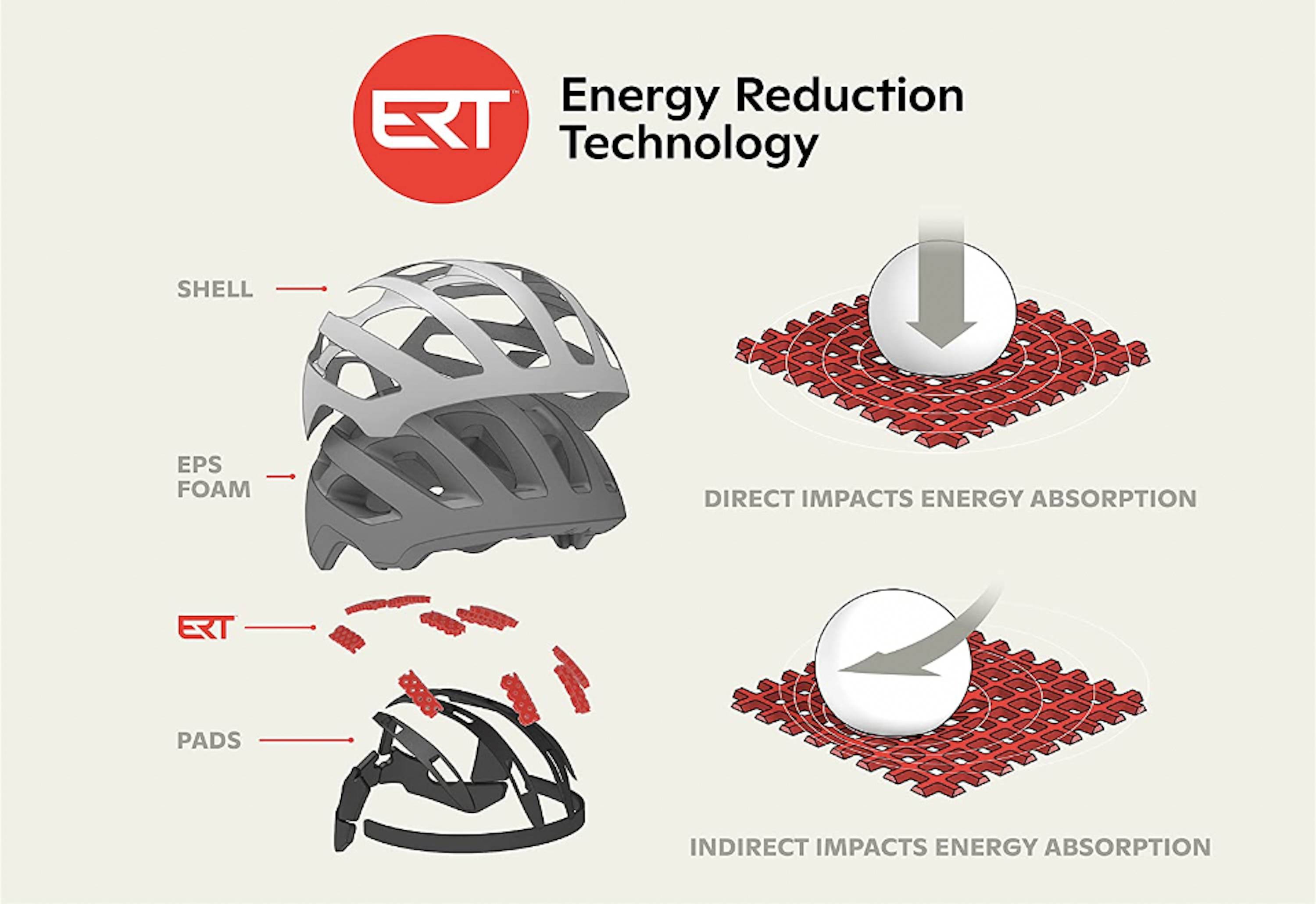Anyone who’s crashed a bike realizes most wrecks aren’t straight ahead — you slam into the ground and grind forward, twisting your head and neck. And that’s where the importance of a helmet comes in.
The mechanics of crashing have inspired a revolution in helmet technology, led by MIPS, which stands for Multi-directional Impact Protection System (introduced in Sweden in 2001). Helmets that use MIPS technology are designed to absorb rotational impact as well as linear impact.
Now, bike brand Schwinn has entered the market with its own version of MIPS called ERT, Energy Reduction Technology. The company has unveiled five ERT helmets, including the ERT Bunker Helmet ($59) that we tested.
Impact-Absorbing Technology: Some Background

Most bicycle helmets are made with an inner liner made of expanded polystyrene, designed to absorb impact in a crash, plus a shell designed to slide along the ground. All helmets sold in the United States must meet federal standards, which are focused on linear impact.
“A helmet is really good at preventing skull fracture,” said Scott Rice, who oversees helmets and accessories at Pacific Cycle, the parent company of Schwinn. “But most crashes are not a linear impact. You hit at an angle and there’s going to be rotation.”
ERT and MIPS — the current industry gold standard — both reduce rotational impact. While MIPS uses a thin plastic shell to do that, ERT uses a collection of soft, waffle-textured pads that flex in multiple directions. Both systems absorb rotational energy to offer more protection than helmets without such technology.
Schwinn’s ERT pads can be cut to fit different-shaped spaces, giving designers more freedom as they add vents, dial systems, and moisture-wicking pads to helmets, the brand explained.

It’s a less expensive — and Schwinn claims a more direct — solution to the problem of rotational impact. So, instead of purchasing MIPS technology for its products, Schwinn came up with its own system.
Schwinn ERT Bunker Helmet: First Look

The Bunker isn’t a high-end helmet, but it fills a niche. It has deep back-of-head coverage and an extra-long visor that clicks into two positions. It also has 17 air vents ranging in size from a quarter to a pack of dental floss, that provide enough flow to keep the head of the average recreational cyclist cool under most conditions.
The interior padding is held in place by Velcro tabs and can be removed and washed. But because some of the strips are long and narrow, we found them tricky to get them back in place afterward, rumple-free. A dial system at the back of the helmet, coupled with adjustable side and chin straps, provides a good fit.
My army-green Bunker is my go-to not just for mountain biking, but also for commuting to swim practice and running errands. It’s comfortable and fits well.
And best of all, it offers MIPS-like rotational impact protection — for just $59.








